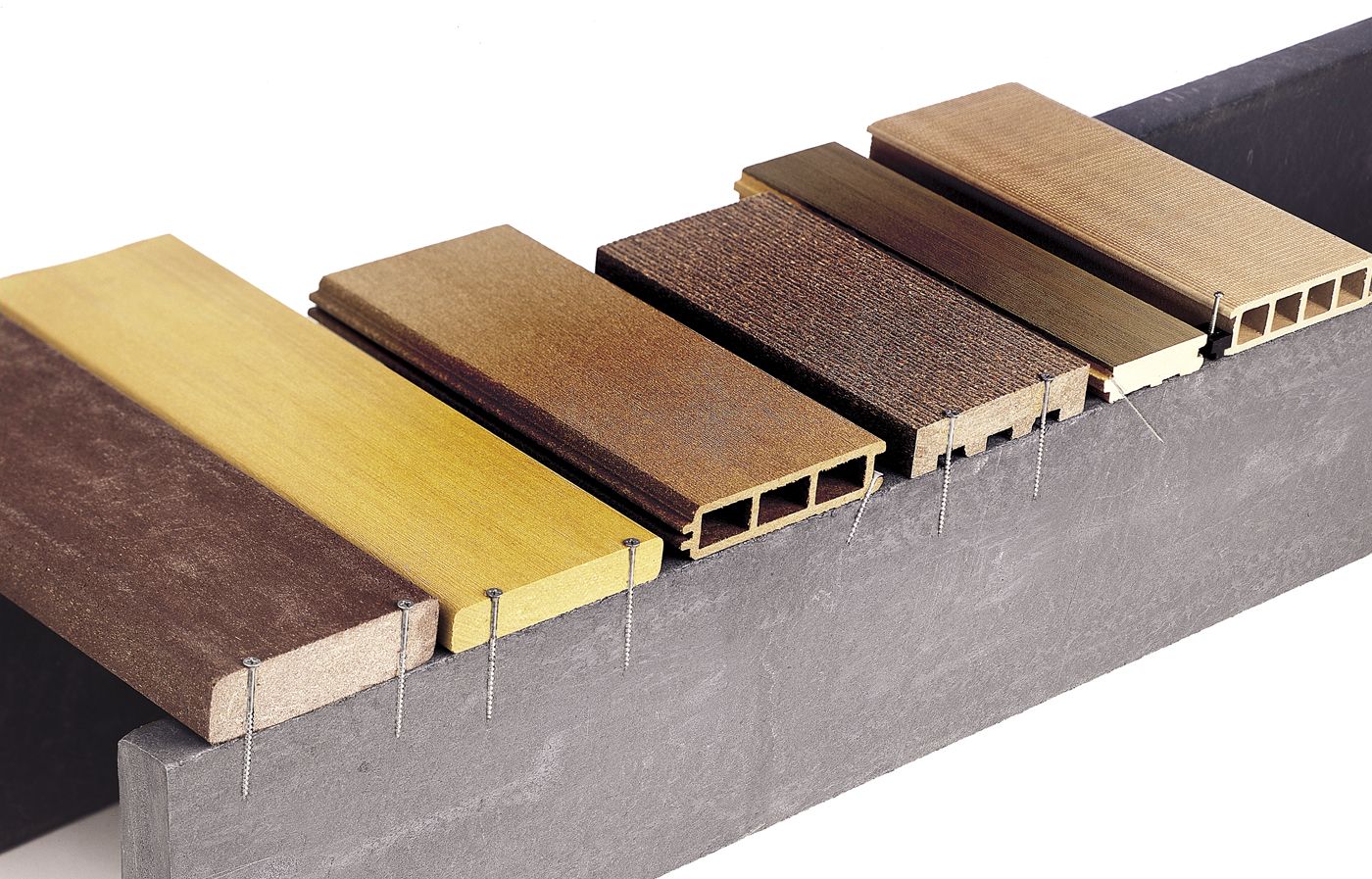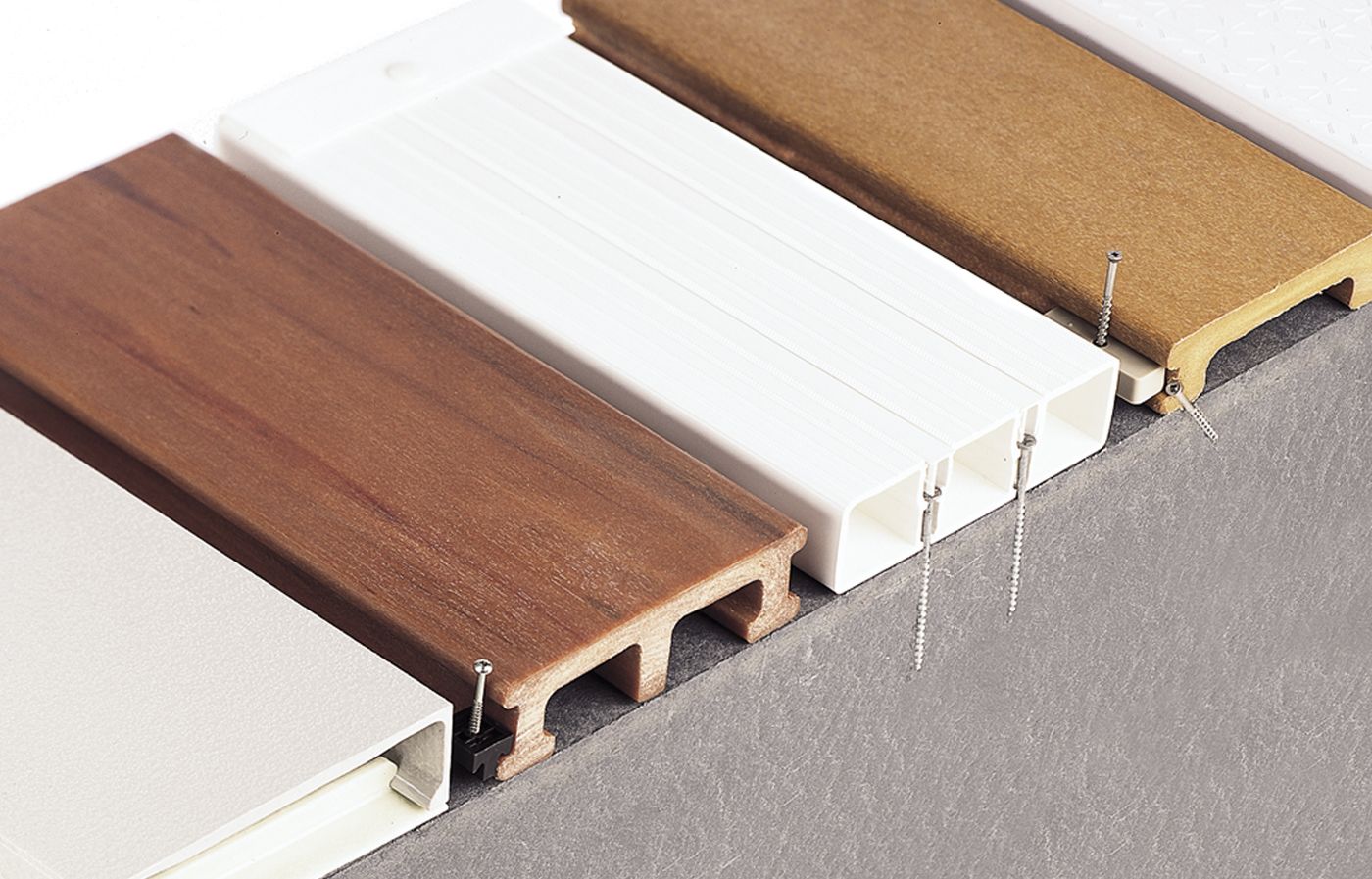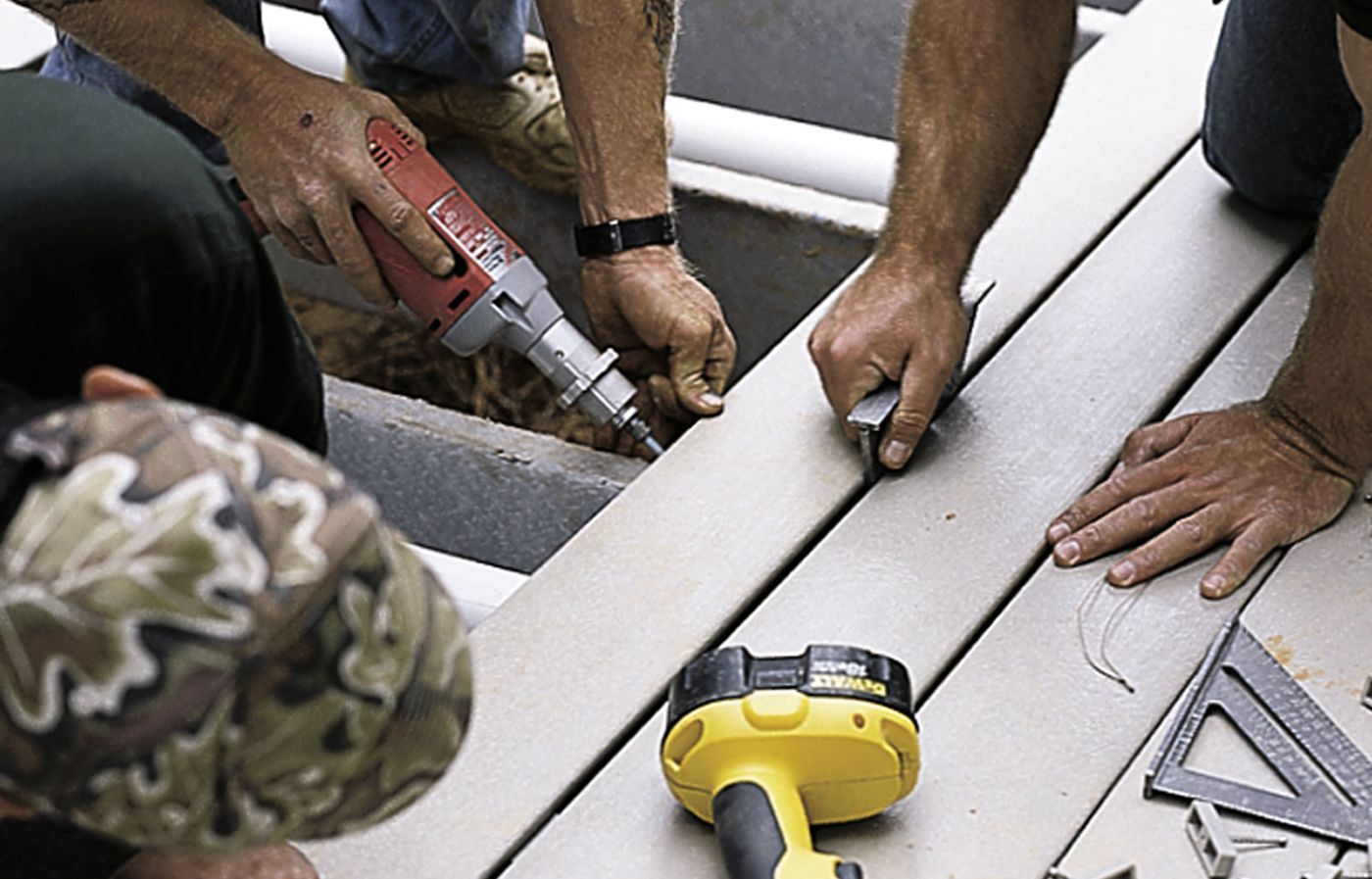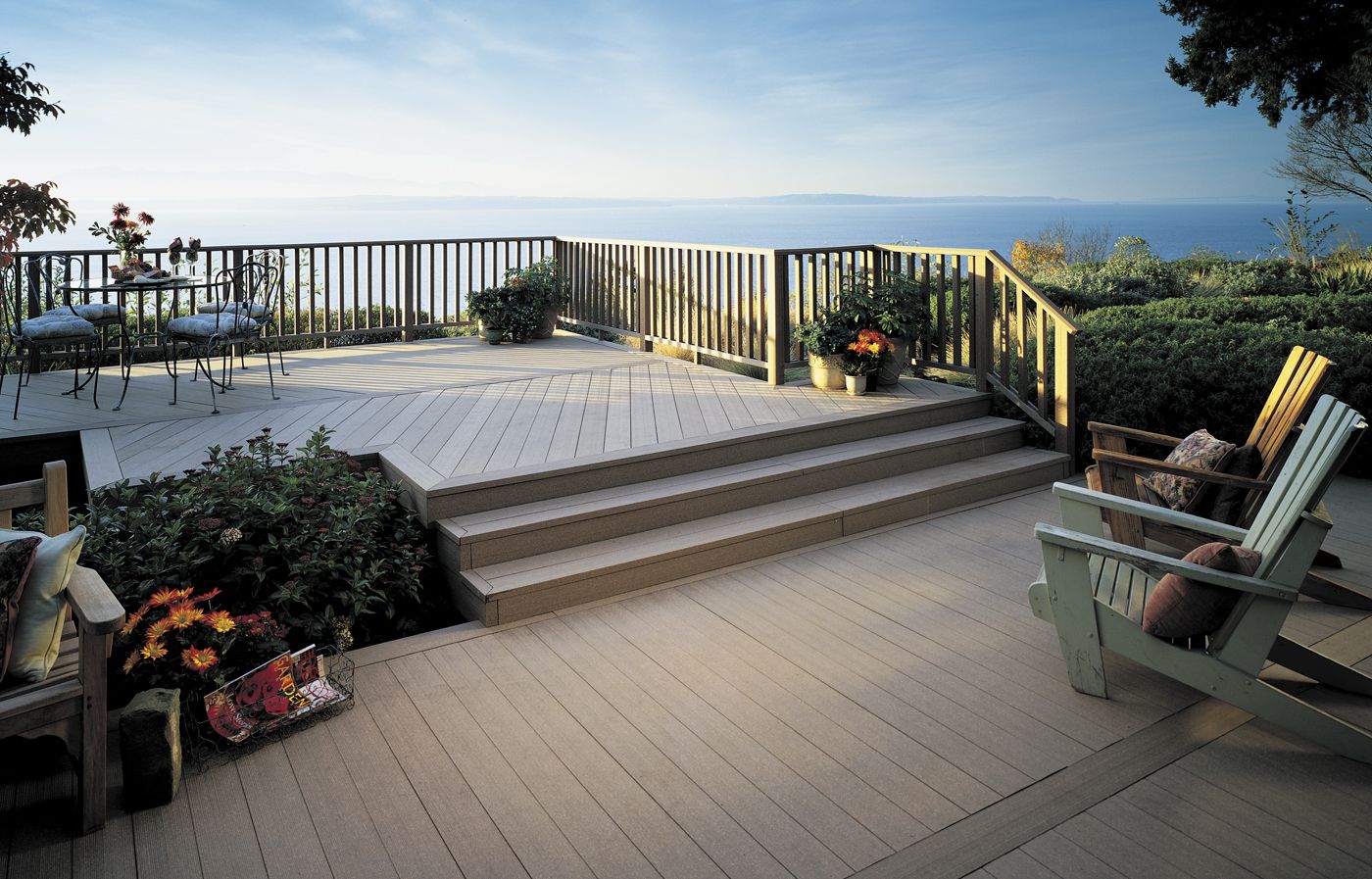High-tech decks are revolutionizing outdoor living spaces by offering homeowners durable, low-maintenance alternatives to traditional wood decking. The innovative materials of these decks, primarily composed of composite and all-plastic options, are transforming how we think about and enjoy our outdoor areas. In this guide, we’ll explore the various aspects of high-tech decking, from material choices to installation techniques, helping you make an informed decision for your outdoor space.
High-Tech Decking Materials
High-tech decking materials fall into two main categories—composite and all-plastic. Each type offers unique benefits and considerations for homeowners looking to upgrade their outdoor living areas.

Composite Decking: The Popular Choice
Composite decking is by far the most popular type of nonwood decking. This material combines the best of both worlds, offering the look and feel of wood with enhanced durability and lower maintenance requirements.
Composite decks are made from a mixture of wood fibers and recycled or virgin plastics. Typically, they contain about 50% wood dust from sawmills, along with high-density polyethylene (HDPE) or, in some cases, polyvinyl chloride (PVC). This combination results in a product that closely mimics the appearance and texture of natural wood while offering improved resistance to weathering and decay.
One of the main advantages of composite decking is its ease of maintenance. Unlike wood, composite boards don’t require regular staining or sealing. However, it’s important to note that they’re not entirely maintenance-free. As Randall Firmin, regional sales manager for USPL, points out, “Composites are not no-maintenance decks, they’re low-maintenance decks.” Periodic cleaning with a scrub brush and deck cleaner is necessary to keep the surface looking its best.

All-Plastic Decking: Ultimate Low Maintenance

All-plastic decking takes low maintenance to the next level. Made entirely from recycled polyethylene or virgin PVC, these decks are virtually impervious to moisture and decay. This makes them an excellent choice for homeowners seeking a truly hands-off decking solution.
The primary advantage of all-plastic decking is its minimal upkeep requirements. To clean off dirt or spilled food, a simple hosing down or washing with soap and water is usually sufficient. Mildew can be easily scrubbed away with a deck cleaner or bleach-containing detergent.
However, all-plastic decking does have some drawbacks. As Marc Richmond, project manager for the Green Builder program in Austin, Texas notes, “It’s just too ‘plastic-y’ for many people.” The material doesn’t closely resemble wood, which may deter those seeking a more natural look. Additionally, some all-plastic decking products, particularly hollow ones, can produce a noticeable clatter when walked on.
Benefits of High-Tech Decks
High-tech decks offer several advantages over traditional wood decking, making them an attractive option for many homeowners.
Durability and Longevity
One of the most significant advantages of high-tech decks is their exceptional durability. Unlike wood, which can crack, splinter, and rot over time, composite and all-plastic decking materials are designed to withstand the elements for decades. These materials resist fading, staining, and scratching, maintaining their appearance far longer than traditional wood decks.
Many high-tech decking products come with extensive warranties, some lasting up to 50 years for all-plastic options. This longevity provides peace of mind and can also increase the value of your home over time.
Low Maintenance Requirements
High-tech decks significantly reduce the time and effort required for upkeep compared to wood decks. Traditional wood decks demand regular cleaning, staining, and sealing to maintain their appearance and structural integrity. In contrast, composite and all-plastic decks require minimal maintenance.
For composite decks, occasional cleaning with a scrub brush and deck cleaner is usually sufficient to keep them looking their best. All-plastic decks are even easier to maintain, often needing nothing more than a simple hose-down to remove dirt and debris.
Eco-Friendly Options
Many high-tech decking materials are made from recycled materials, making them an environmentally conscious choice. For example, some composite decking products are manufactured using recycled plastic from items such as grocery bags and milk jugs, combined with reclaimed wood fibers.
By choosing these eco-friendly decking options, homeowners can reduce their environmental impact while enjoying a beautiful and functional outdoor space. This sustainable approach to decking aligns with growing consumer interest in green building practices.
Comparing High-Tech Decks To Traditional Wood
By comparing the pros and cons of high-tech materials against traditional wood, you’ll be able to make an informed decision based on your specific needs and preferences.
Cost Considerations
Initially, high-tech decking materials tend to be more expensive than traditional wood options. However, it’s important to consider the long-term costs as well. While wood decks may have a lower upfront cost, they require ongoing maintenance expenses for cleaning, staining, and eventual board replacement. High-tech decks, on the other hand, have minimal maintenance costs over their lifetime, potentially making them more cost-effective in the long run.
Aesthetic Differences
One of the most noticeable differences between high-tech decks and wood is their appearance. While composite decking has made great strides in mimicking the look of natural wood, some homeowners still prefer the authentic appearance and feel of real wood.
All-plastic decking, in particular, can look noticeably different from wood. As mentioned earlier, some find it too “plastic-y” for their taste. However, both composite and all-plastic options come in a wide range of colors and textures, allowing homeowners to choose a style that best fits their aesthetic preferences.
Performance in Various Climates
High-tech decking materials generally outperform wood in extreme weather conditions. They resist warping, cracking, and rotting, making them ideal for areas with high humidity or frequent temperature fluctuations.
However, it’s worth noting that some all-plastic decking can become quite hot in direct sunlight. As Cynthia Kravitz, vice president of Phoenix Recycled Plastics, points out, “A redwood-color deck can become too hot to walk on barefoot.” This heat retention is something to consider if you live in a particularly warm climate.
Installation Techniques for High-Tech Decks
Installing a high-tech deck requires some specific techniques that differ from traditional wood deck installation. Understanding these methods will ensure your deck is properly constructed and performs optimally.
Proper Joist Spacing
One important aspect of installing high-tech decks is proper joist spacing. Because plastic and composite materials can lose some rigidity in high temperatures, they require closer joist spacing than wood decks to prevent sagging.
Manufacturers typically specify joist spacing requirements, which can be as close as 12 inches depending on the size and thickness of the decking material. Always follow the manufacturer’s guidelines to ensure your deck maintains its structural integrity over time.
Fastening Methods
There are several methods for fastening high-tech decking boards, each with its own advantages. Some products use hidden fastening systems that clip into grooves on the sides of the boards, creating a clean, screw-free surface.
For face-screwed installations, it’s important to use screws specifically designed for composite or plastic decking. These screws help prevent the “mushrooming” effect that can occur when standard wood screws are used.
Dealing with Expansion and Contraction
Unlike wood—which primarily expands and contracts across its width—plastic and composite decking materials tend to change length with temperature fluctuations. This characteristic calls for special consideration during installation.
Manufacturers typically recommend leaving specific gaps between board ends to accommodate this movement. Some products also come with specialized fastening systems designed to allow for expansion and contraction while keeping the boards secure.
Top Brands in High-Tech Decking
The high-tech decking market offers a wide range of options from various manufacturers. Here’s a look at some of the leading brands in both composite and all-plastic decking categories.
Leading Composite Deck Manufacturers
- Trex: Known for their eco-friendly products made from recycled materials
- TimberTech: Offers a range of composite and PVC decking options
- Fiberon: Provides composite decking with realistic wood grain patterns
- ChoiceDek: Produces composite decking made from recycled plastics and cedar
Innovative All-Plastic Deck Producers
- Azek: Specializes in PVC decking with a variety of color options
- Eon: Offers all-plastic decking made from recycled and virgin plastics
- CertainTeed: Produces PVC decking systems with hidden fasteners
- Dream Deck: Manufactures PVC decking with snap-on installation systems
Maintaining Your High-Tech Deck
While high-tech decks require less maintenance than wood, they still need some care to keep them looking their best. Here are some tips for maintaining your composite or all-plastic deck.
Cleaning and Care Tips
For routine cleaning, simply sweep your deck regularly to remove debris. For more thorough cleaning:
- Use a soft-bristle brush and mild soap solution for composite decks.
- For all-plastic decks, a simple hose-down is often sufficient.
- Avoid using a pressure washer, as it can damage the deck surface.
- Clean up spills promptly to prevent staining, especially on composite decks.
Addressing Common Issues
- Mold and mildew: Use a deck cleaner containing bleach to remove any growth.
- Scratches: Some composite products can be lightly sanded to remove surface scratches.
- Fading: While high-tech decks resist fading better than wood, some color change over time is normal.
- Snow and ice: Use plastic shovels to remove snow, and avoid using metal tools that can scratch the surface.
Design Ideas for High-Tech Decks
High-tech decking materials offer versatility in design, allowing homeowners to create outdoor spaces that suit their style preferences. These materials can accommodate a wide range of design ideas.
Contemporary Styles
For a sleek, modern look:
- Use contrasting colors for the deck boards and railings
- Incorporate curved elements or diagonal patterns in the deck design
- Add built-in lighting for a dramatic nighttime effect
- Combine decking with glass panels for an unobstructed view
Traditional Looks with Modern Materials
To achieve a classic deck appearance:
- Choose decking colors that mimic natural wood tones
- Use traditional railing designs with composite or plastic materials
- Incorporate classic deck features such as pergolas or built-in seating
- Add decorative post caps for a finished look
The Evolution of Tech Decks
The term “tech deck” has an interesting history, evolving from a popular toy to a descriptor for innovative outdoor decking materials. Tech Decks originally referred to miniature skateboard toys that gained popularity in the late 1990s and early 2000s. These finger-operated skateboards allowed enthusiasts to perform tricks on a small scale, mimicking real skateboarding moves.
The term “high-tech deck” emerged as new decking materials gained popularity, reflecting their advanced properties and manufacturing processes. Today, it encompasses a range of composite and all-plastic decking options that offer durability, low maintenance, and design flexibility for outdoor living spaces.
Our Conclusion
High-tech decks represent a significant advancement in outdoor living solutions, offering homeowners a durable, low-maintenance alternative to traditional wood decking. Whether you choose composite or all-plastic options, these materials provide long-lasting performance with minimal upkeep, allowing you to spend more time enjoying your outdoor space and less time maintaining it.

